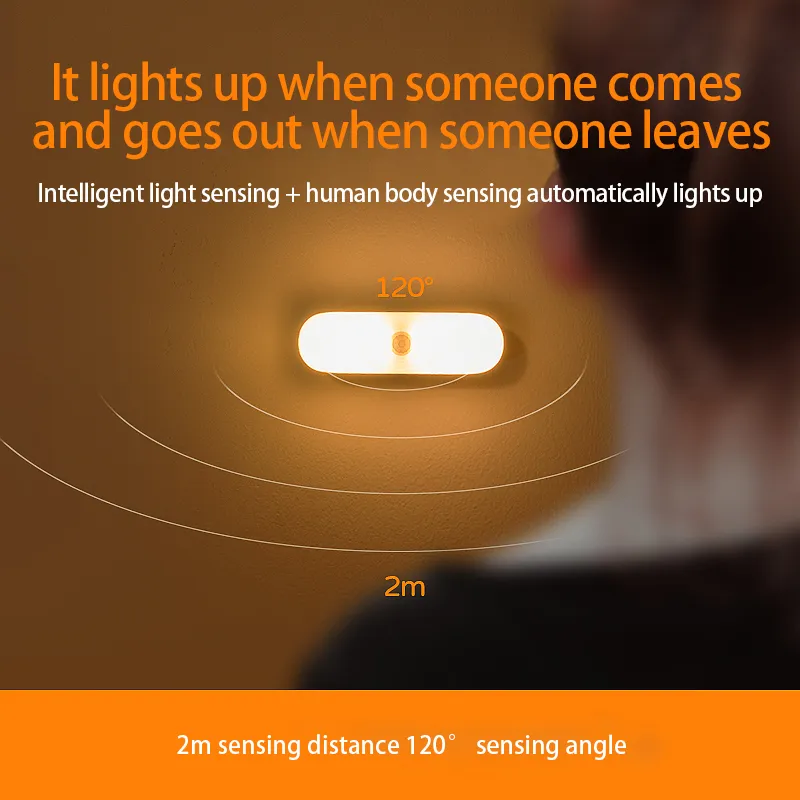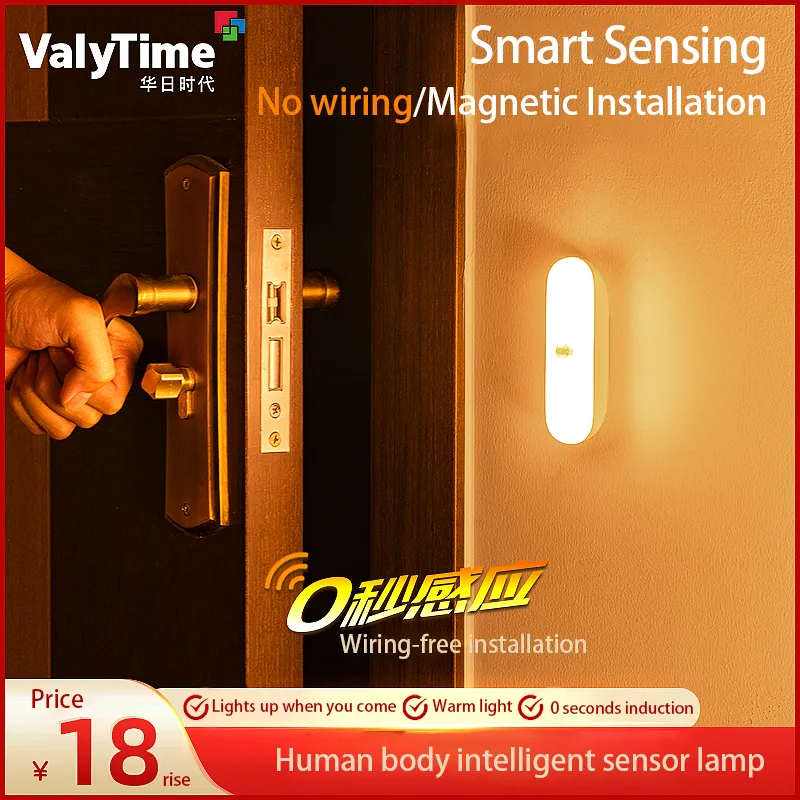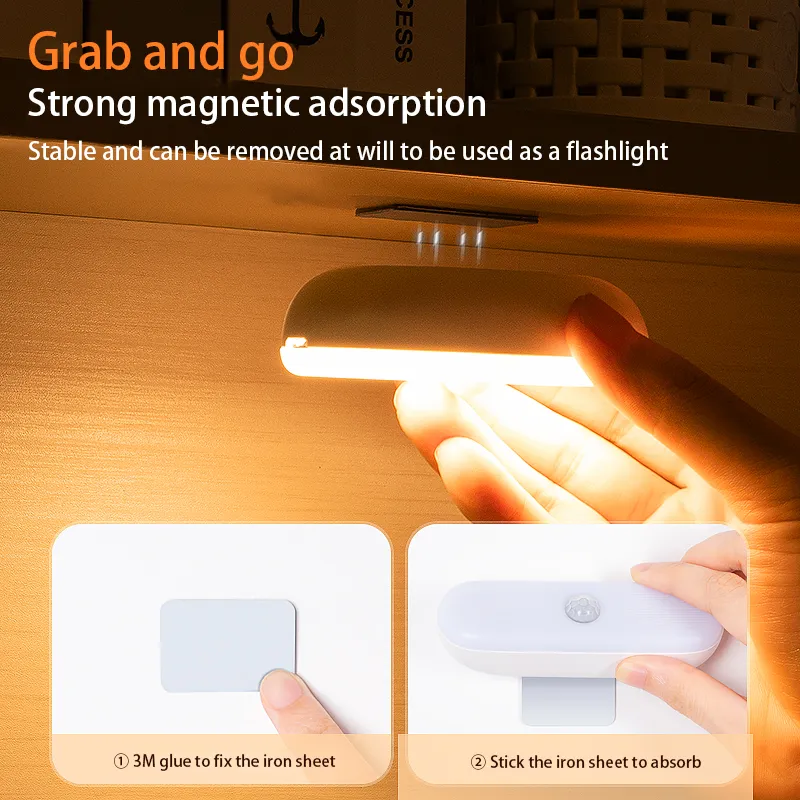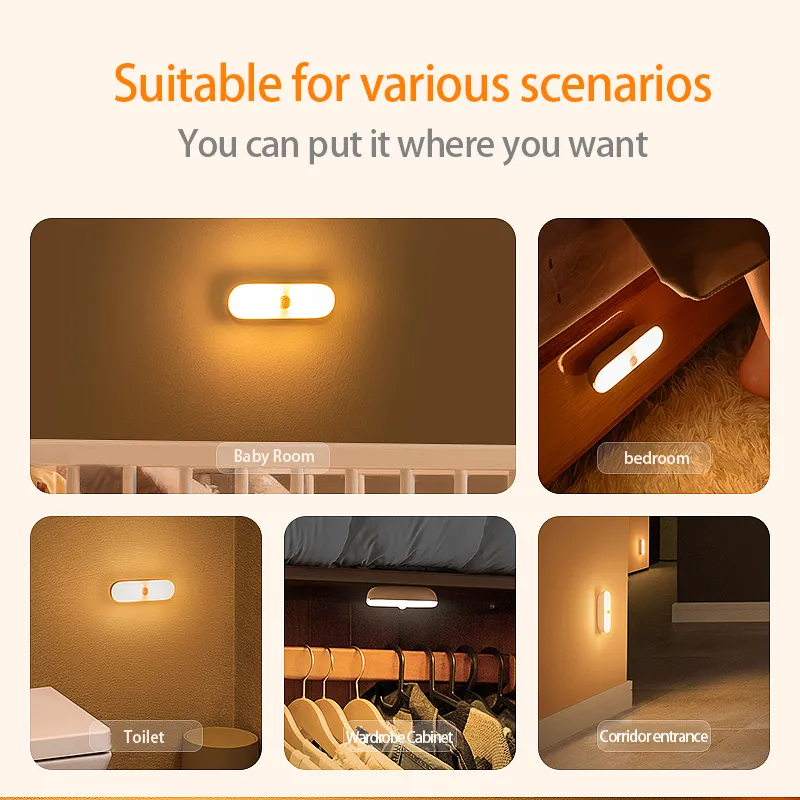Which light is best for under-cabinet installations?
Under-cabinet lighting not only impacts the overall layout and aesthetics of a kitchen but also directly impacts the convenience and safety of daily operations. Whether in the kitchen, bathroom, or other areas requiring additional light, the right lighting can greatly enhance the functionality and user experience of the space.
When choosing under-cabinet lighting, many people consider different types of lamps. Among these options, motion sensor LED night lights, with their unique advantages, are becoming a popular choice.
So, why are motion sensor LED night lights so suitable for under-cabinet installations? This article will address the question, "Which light is best for under-cabinet installations?" by delving into the features, advantages, and application scenarios of motion sensor LED night lights, providing you with more professional selection advice.

Why choose motion sensor LED night lights for under-cabinet lighting?
Under-cabinet lighting often has multiple requirements: it must provide sufficient light to effectively illuminate kitchen counters and workspaces while also being simple, energy-efficient, and convenient. For many modern families, the design and functionality of motion sensor LED night lights perfectly meet these needs.
1. Energy Saving and Environmental Protection
LED lamps have become a mainstream lighting option in modern homes due to their excellent energy efficiency and long lifespan. Compared to traditional bulbs, LEDs consume less power and offer higher brightness, significantly reducing energy consumption while providing comparable lighting. This is especially true in spaces like under cabinets, where high-intensity lighting is often unnecessary. LED night lights can provide sufficient brightness without wasting energy.
2. Motion Sensor Function and Smart On/Off
One of the key features of motion sensor LED night lights is their intelligent control system. Their built-in infrared or microwave sensors detect human motion. When a user approaches the cabinet, the light automatically turns on, eliminating the need for manual on/off switching. Furthermore, when no motion is detected, the night light automatically turns off, eliminating unnecessary energy waste and achieving both energy conservation and efficiency.
This feature is particularly suitable for frequently used spaces like kitchens, especially during busy cooking sessions when hands may be greasy or wet. The motion sensor's automatic on/off feature significantly enhances user convenience.
3. Easy Installation and Maintenance
Motion sensor LED night lights are typically designed to be compact and easy to install. For areas with limited space, such as under cabinets, motion sensor LED night lights are often the perfect size, easily fitting in corners, above, or below cabinet edges without taking up too much space. Furthermore, many motion sensor LED night lights offer magnetic or adhesive mounting, making installation even more convenient and eliminating the need for screws and complicated tools.
Furthermore, LED lamps generally have a long lifespan and are less prone to failure, reducing the need for frequent bulb replacements and significantly lowering maintenance costs.
4. Efficient Lighting
Motion sensor LED night lights can provide highly efficient lighting under cabinets. Their uniform, moderate brightness ensures clear illumination of the work area without glare. Proper lighting is particularly crucial in areas requiring delicate work, such as kitchens and bathrooms. LED bulbs can adjust their color temperature based on their design, and some high-quality motion sensor LED night lights even feature dimming, further enhancing their flexibility.

Mounting Location and Methods for Motion Sensor LED Night Lights
Choosing the right location is crucial when installing motion sensor LED night lights under cabinets. The correct mounting location not only improves lighting quality but also extends the lifespan of the lamp and ensures ease of use.
1. Mounting Location
Motion sensor LED night lights are generally recommended to be mounted on the inside or underside of a cabinet. Avoid obstructing the sensor during installation to ensure it can sensitively detect motion. For example, if the lamp is mounted too high off the ground, the sensor may not be able to effectively detect human activity, resulting in the light not turning on properly. Generally, mounting the lamp on the underside of the cabinet or on the inner wall, approximately 20 to 30 cm above the ground, is ideal.
2. Mounting Method
For under-cabinet installations, consumers can choose from a variety of mounting methods. Magnetic, adhesive, and hook mounting are common options. Magnetic and adhesive mounting are excellent choices if you don't want to damage the cabinet. These methods are quick and easy to install, require no drilling, and allow for easy adjustment of the lamp's position.
For more fixed or stable mounting locations, hook or screw mounting options are available. These ensure greater stability during use and are suitable for large cabinets or areas requiring higher brightness.
3. Avoid Excessive Light Pollution
Although LED lamps generally provide high light intensity, it's important to avoid excessive light pollution when installing motion sensor LED night lights, especially in areas like kitchens and dining rooms. Excessive light can disrupt the dining atmosphere or create unwanted reflections, especially if there's glass or stainless steel underneath cabinets. Therefore, when choosing a motion sensor LED night light, it's recommended to select one with a dimming function, allowing you to adjust the light intensity as needed.

Battery Life and Maintenance of Motion Sensor LED Night Lights
Motion sensor LED night lights typically come in two power options: battery-powered and plug-in. For under-cabinet lighting, most households choose battery-powered motion sensor LED night lights, which avoid tangled cables and increase installation flexibility. Battery life is a key consideration for consumers.
1. Battery Life and Replacement
Battery-powered motion sensor LED night lights typically have a long battery life, with many brands claiming a lifespan ranging from several months to a year, depending on frequency of use and the type of fixture. Frequent triggering of the sensor switch may shorten the battery life.
To extend the battery life, it's recommended to use high-quality batteries and check the battery charge regularly. When the battery charge is low, replace it promptly to avoid affecting the lamp's performance. Some high-end brands of motion sensor LED night lights support rechargeable batteries, allowing users to simply recharge and reuse them, eliminating the hassle of frequent battery replacements.
2. Maintenance and Cleaning
Although LED lamps have a long lifespan, regular cleaning of the lamp surface, sensor, and bulb is still necessary to ensure optimal performance. This is especially true in kitchen environments, where the accumulation of oil smoke and dust can easily cause stains on the lamp surface, affecting the lighting effect. When cleaning, use a soft cloth to wipe the lamp surface, avoiding harsh tools that may scratch the surface.

What markets does Huari Lighting serve?
Since 1996, Huari has been exporting LED lighting to Europe, North America, Asia, and the Middle East. Our customers include wholesalers, retailers, contractors, and brands. With ISO-certified quality management and internationally approved CE, RoHS, and ERP products, we meet different market standards. Buyers rely on our company for both cheap mass-market LED night lights and high-end customized lighting.
